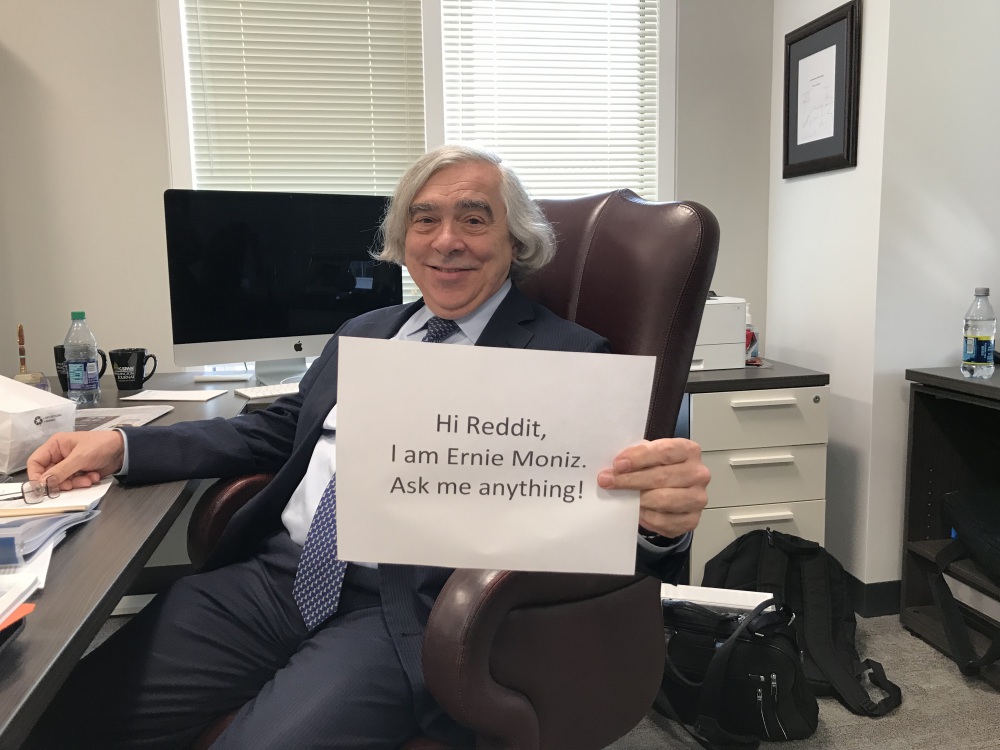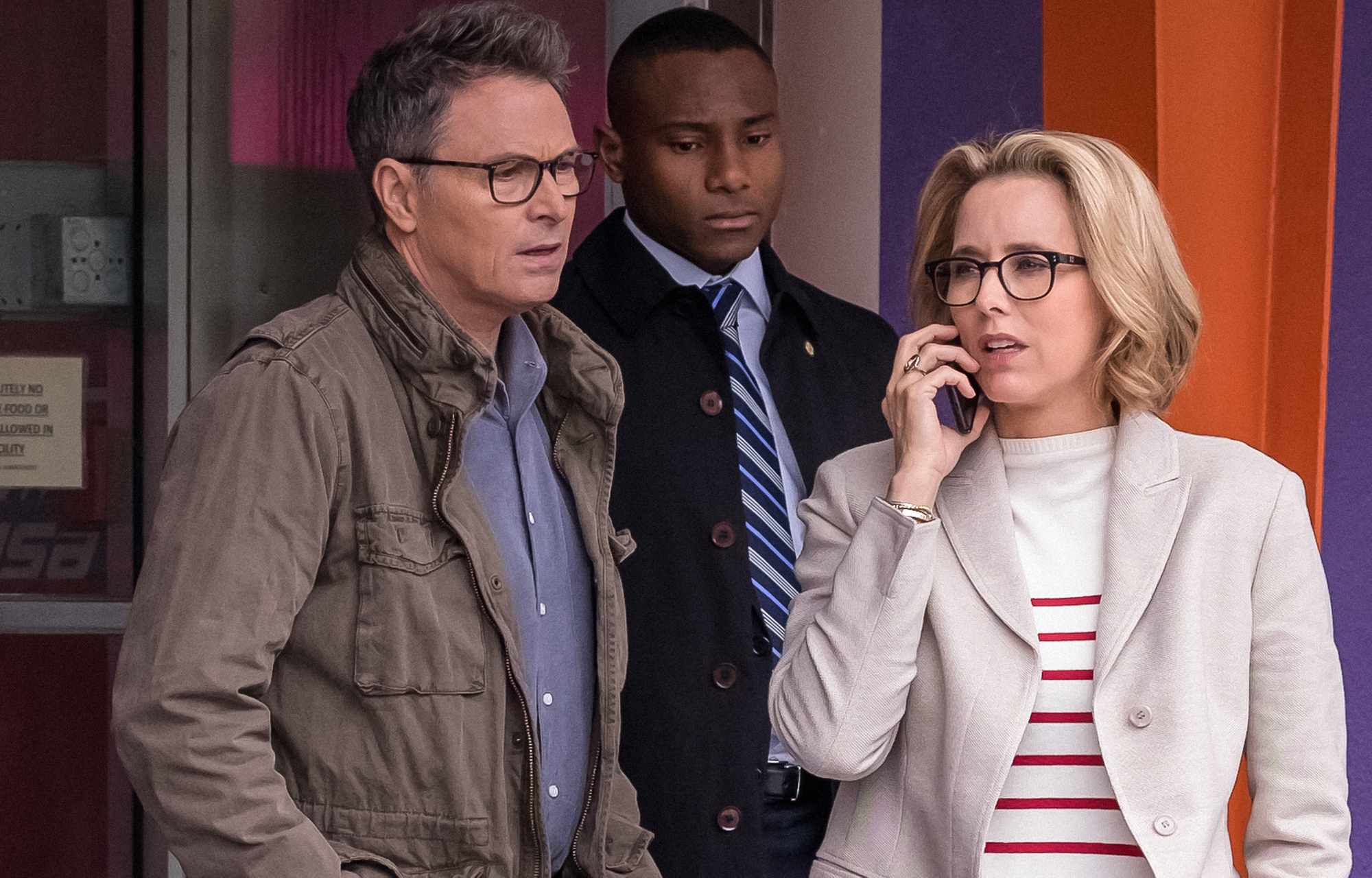
Atomic Pulse
Did You Catch the Madam Secretary Season Finale? How About the Reddit AMA with Ernie Moniz? Riveting, both.

One of the most challenging aspects of NTI’s work—indeed,
the work of all organizations in the nonproliferation and arms control
community—is communicating the profound dangers posed by nuclear weapons. Last month,
the CBS hit show Madam Secretary succeeded in doing just that in an
edge-of-your-seat season finale.
The episode followed the events of a major national security
crisis, as top U.S. military and political officials are alerted to a massive
Russian nuclear attack and have to decide whether or not to retaliate. The
scenario that unfolds was entirely realistic; in fact, similar situations have already occurred. No spoilers here about how things turned out. If
you missed the show, you can watch it on CBS.com
to find out.

So how did the show’s writers develop such a realistic
scenario? They consulted with a number of top experts, including NTI Co-Chair
and CEO Ernie Moniz, the former U.S. Secretary of Energy. Following the
premiere, Moniz and David Grae, an executive producer and writer for the show,
held an “Ask
Me Anything” on Reddit.
Here are a few highlights of the conversation:
Question from
DocDavis120
To Ernest – How realistic was the show last night? It
terrified me!
To David – How much research and prep goes into making one
episode like this?
Reply from Moniz: Regrettably, the show was quite realistic
in showing how the president can be provided wrong information and yet have
almost no time to respond. We had the opportunity to discuss these kinds of
scenarios with David and his team. In fact, the scenario is not terribly
different from historical reality. It would be wonderful if the program also
proves correct in finding a fast path to an agreement to reduce this risk. You
can check out close calls here: www.nti.org/closecalls EJM
Reply from Grae: We researched last night’s episode to
within an inch of its life. We not only consulted with Secty Moniz, but also
Bruce Blair, a former ICBM launch officer and leading expert on this very
issue, among other experts, including those on both sides of the issue. Beyond
that, our production team worked with experts to make sure we got the physical
details of the episode right—or as right
as you can get top secret materials and areas, like the contents of the nuclear
football and the inside of an ICBM launch center as well as US Strategic
Command and the Pentagon War Room. Like most aspects of television, it was a
big team effort. –David Grae
Question from Maximum cats
What do you think are the most promising paths for people
with STEM (science, technology, engineering, math) degrees to get started in
policy careers in the US, especially when it comes to energy/nuclear issues? In
terms of having the greatest impact, should one focus on NGOs or on the US
federal government? If the latter, the executive branch or Congress?
Reply from Moniz: First, let me say that the policy world
would benefit from more participants with strong STEM backgrounds, and indeed,
we are seeing a number of universities advancing technology and policy programs.
To start off in this field, you should first dig into a policy issue that is of
great interest to you and that has strong scientific and technical dimensions.
Whether a future might lie in with the executive or legislative branches or
with non-governmental orgs or universities depends on opportunities that pop
up. Success in one area will create more opportunities. EJM
Question from
Codercafe
Do you feel MAD (mutual assured destruction) is still as
applicable as it was back during the Cold War? Or has that changed?
Reply from Moniz: Deterrence remains a key to our national
security policy with the goal being that no nuclear weapon is used. However, we
do need to face some new realities, such as cyber threats, nuclear terrorism
and the current low level of communication between the US and Russia. These
factors can lead to failed deterrence. Madam Secretary caught this in a very
gripping way by showing how misinformation could lead a president to a very
hurried decision based on wrong data. This alerting issue has got to be folded
into a modern deterrence posture. EJM
There is so much more! You can read the
full AMA here.
Stay Informed
Sign up for our newsletter to get the latest on nuclear and biological threats.
More on Atomic Pulse

Art as Medium for Advocacy: Manga Artist Gigi Murakami on Her Mural for #CranesForOurFuture
Gigi Murakami is an American freelance illustrator and manga (comic) creator based in Brooklyn, New York. Her work blends Japanese manga art and vintage American comic and pulp aesthetics.

#CranesForOurFuture: Ukrainian Artist Eugenia Zoloto on Finding Hope during War
Eugenia Zoloto is a Ukrainian artist who specializes in paper cutting, collages, and illustrations, in addition to working with oil paints and mixed mediums. She lives in Kyiv with her husband and two children and is participating in the 2023 #CranesForOurFuture campaign by contributing a beautiful floral sculpture featuring an origami crane.

Oppenheimer and Advocacy: You’ve Seen the Film, Now What?
Considering the current nuclear landscape, the power of Christopher Nolan’s film and the moral and ethical questions raised by J. Robert Oppenheimer’s work, movie viewers may be motivated to act to advocate for a world without nuclear weapons. But how?
